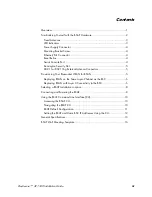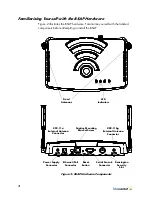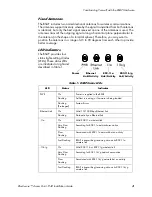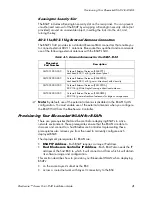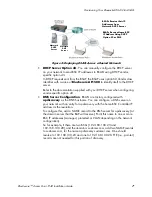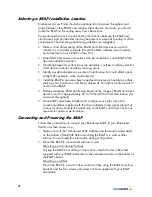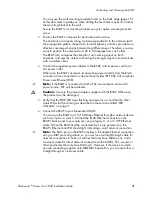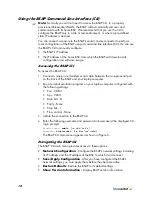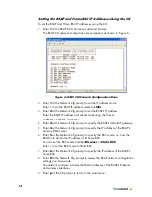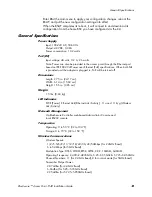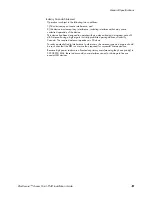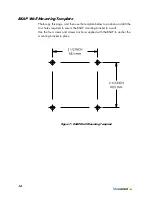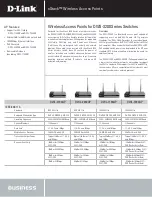
Connecting and Powering the BSAP
BlueSecure™ Access Point 1540 Installation Guide
9
You may use the wall mounting template found on the back page (page 16)
of this document to guide you when drilling the four holes required to anchor
the mounting bracket to the wall.
Secure the BSAP to its mounting bracket using its captive mounting bracket
screw.
3.
Position the BSAP’s antennas for best radio performance.
The antennas emit signals along a plane perpendicular to the antenna (with
the propagation pattern shaped as a toroidal sphere), and thus provide more
effective coverage when positioned along different axes. Therefore, you may
want to position the antennas from 45 to 90 degrees from each other.
The BSAP also compares the strength of an incoming signal on both
antennas, and uses the antenna receiving the stronger signal to communicate
with a wireless client.
4.
Connect the supplied power adapter to the BSAP, and its power cord to an
AC power outlet.
Otherwise, the BSAP can derive its operating power directly from the RJ-45
connector when connected to a device that provides IEEE 802.3af compliant
Power over Ethernet (PoE).
)
Note:
If the BSAP is connected to both a PoE source device and an AC
power source, PoE will be disabled.
Caution:
Use only the power adapter supplied with the BSAP. Otherwise,
the product may be damaged.
5.
Verify that the PWR LED stops flashing and remains on, and that the other
status LEDs start functioning as described in the section entitled “LED
Indicators” on page 3.
6.
Connect the BSAP to your Bluesocket WLAN.
You can wire the BSAP to a 10/100 Mbps Ethernet through a network device
such as a hub or a switch. Connect the RJ-45 Ethernet connector on the
BSAP’s back panel to your network using category 3, 4, or 5 UTP Ethernet
cable. When the BSAP and the connected device are powered on, the
BSAP’s Ethernet Link LED should light indicating a valid network connection.
)
Note:
The RJ-45 port on the BSAP provides a full-duplex Ethernet connection
using an MDI pin configuration, so you must use a straight-through cable for
network connections to hubs or switches that only have MDI-X ports, and a
crossover cable for direct network connections to BSC-400s, PCs, servers or
other end nodes that only have MDI ports. However, if the device to which
you are connecting supports auto-MDI/MDI-X operation, you can use either a
straight-through or crossover cable.
Summary of Contents for BlueSecure 1540
Page 4: ...iv Contents...



